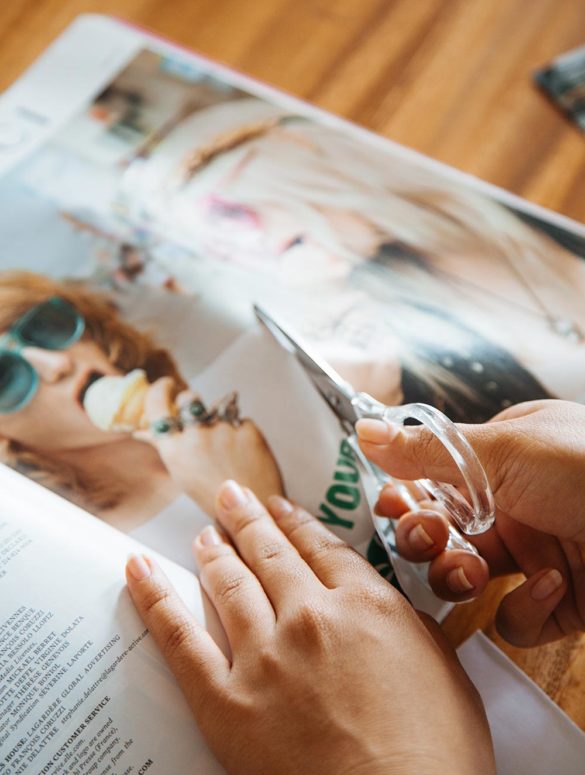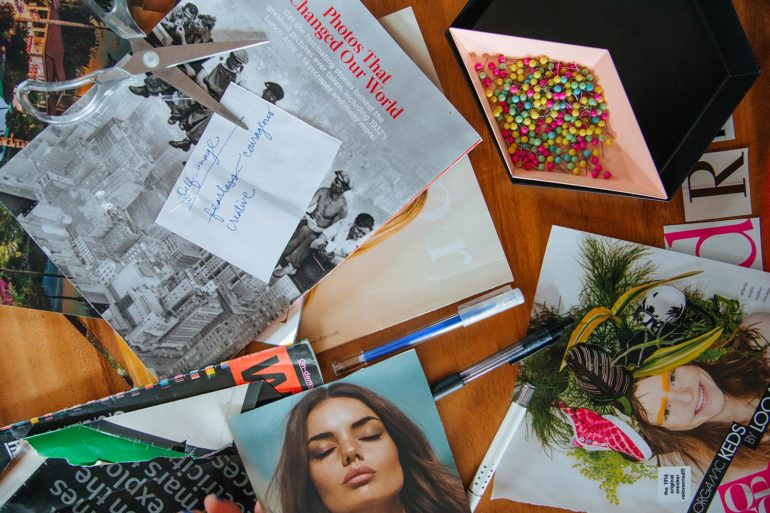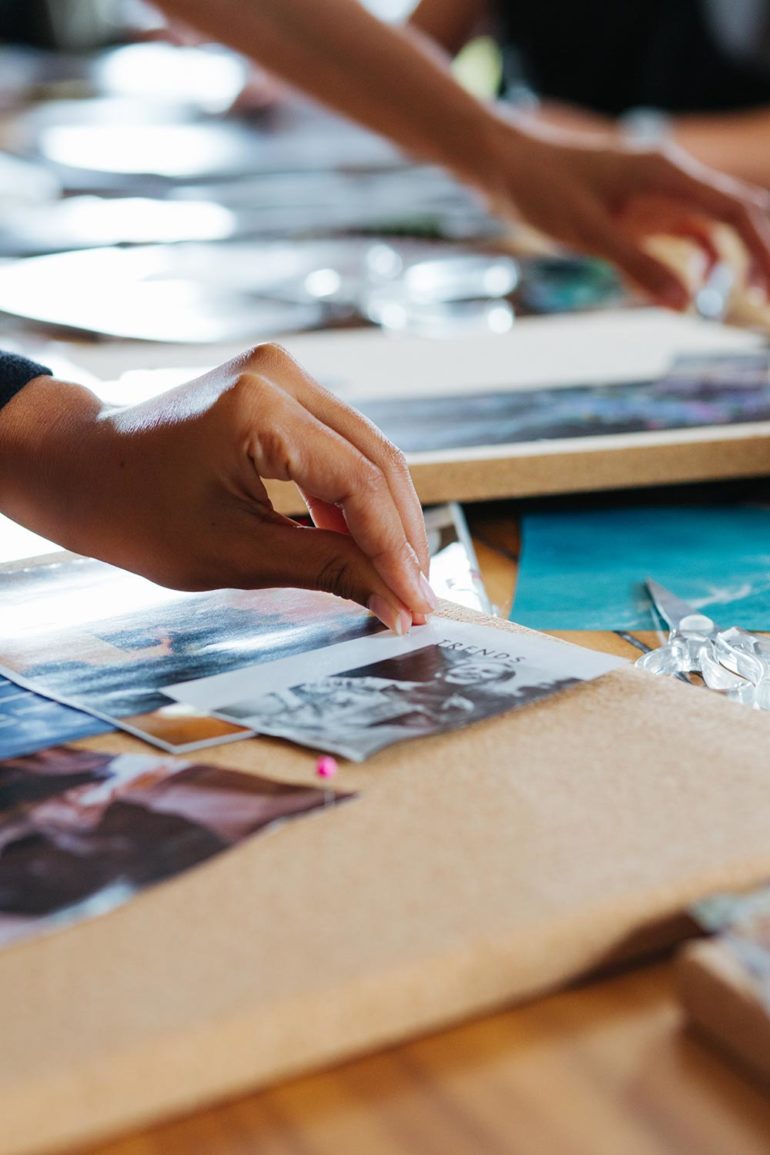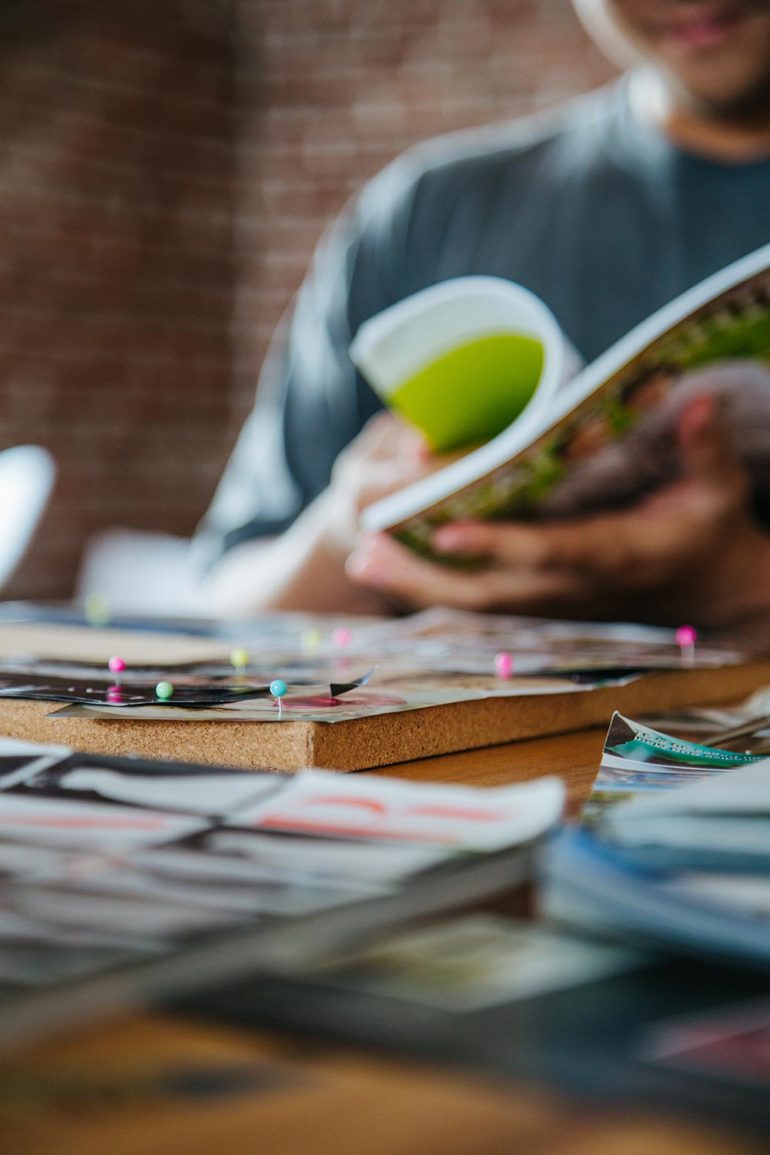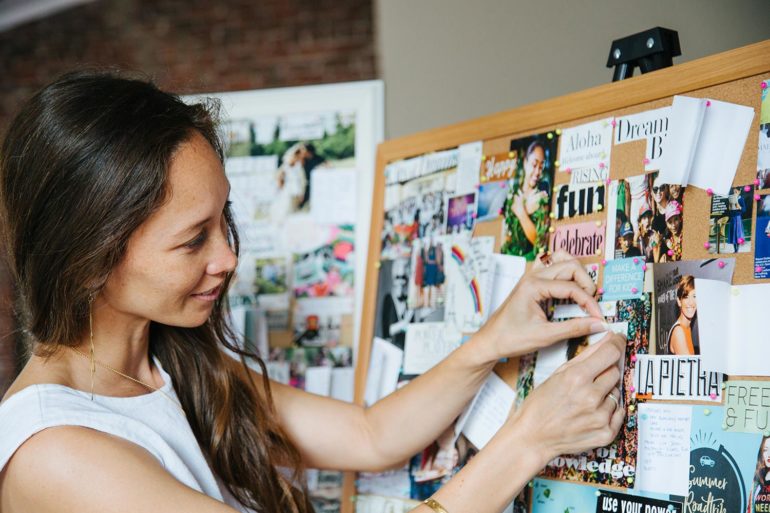Images snipped from magazines are scattered across the table: A couple kissing in the road amid riot police. A bicycle. A serene aerial shot of swimmers in a heartbreakingly crisp blue sea.
I finger the cutouts, rearranging them into orderly piles first by aesthetic (text, large pieces with wide swaths of negative space ideal for backgrounds) and then by content (the ocean, work, glowingly happy faces). Layers build on the corkboard in front of me as I place words and people and landscapes into my makeshift collage, only to replace them or slip them from bottom to top, over and over again. Each time, I try to find meaning in the paper strata; to create a sense of narrative, perhaps, or home in on a conceptual keystone. Is it my future that I’m building with these pages? Or my past?
A little of both, maybe. These questions are a small part of the exercise of dreamboarding, as guided by dreamboarding expert Tiare Thomas. In my head, as I pick through glossy fashion photos and cropped-out headlines, I hear her voice: “Imagine yourself 10 years from now. What words would your partner use to describe you?”
“Graceful.” “Resilient.” “Creative.” The adjectives I selected ring in my brain as I sift through the paper detritus before me.
“It’s like a map of your desires and dreams, a powerful way for you to explore your identity and get clear on what you want to attract in the future,” says Thomas of dreamboarding. “It’s more than just this collage of pictures—or, at least, it can be.”
Thomas made her first dreamboard in 2009 during a critical point of transition in her life. In the throes of career, relationship, and life upheavals, she was yearning for change and direction. Dreamboarding was a way for her to create order out of the chaos of her own mind and heart in order to understand what she wanted to attract from the world and then manifest it.
After a successful first experience, she spent the next decade exploring the practice of dreamboarding. First she introduced her friends to dreamboard sessions, then she debuted public workshops, and eventually she started her personal and business development company, Aloha Dreamboard. She honed the experience to make it more meaningful and effective, leading guided visualizations, adding journaling, and targeting key life areas such as self-identity, health, relationship, and career. She expanded her offerings to include specific dreamboarding workshops for business or personal goals and one-on-one or group settings—say, for colleagues interested in improved collaboration, or for a wedding party looking to forge bonds. Today, Thomas utilizes everything from feng shui principles to skills she learned from a program on life coaching.
Thomas noticed people often came to workshops distraught and heavy-hearted, with deep insecurities or dissatisfaction with their life trajectories. “Throughout the process,” she says, “I would notice a shift in their energy, and they would leave clear, empowered, motivated, and this sense of joy would come out.” Through guiding others to those moments of truth and clarity, she had inadvertently found her own passion and purpose.
It’s not unusual for people to cry in her workshops, Thomas says. “We’re striking chords deep down within, and it’s like this sense of release. So, you’re able to heal throughout this process emotionally and shine light on things that you are ready to make shifts on, and grow from it,” she says. “I help people dig deep. I ask people questions that they don’t normally ask themselves.”.
During the private sessions she hosts for ‘Alohilani guests as part of the resort’s Plant Your Intentions package, Thomas combines guided visualizations, journaling, and dreamboarding to help guests clarify their aspirations for the coming year.
In any iteration of Thomas’ workshops, she says, “I [can’t do the work] for them. I’m just a guide.” In the end, the truth in the layers of paper and words on the board—just like the layers of hopes, dreams, goals, and ambitions within—is something only they can fully unearth.
“Graceful.” “Resilient.” “Creative.” I arrange and rearrange, patiently waiting for the rendition that speaks to me.

